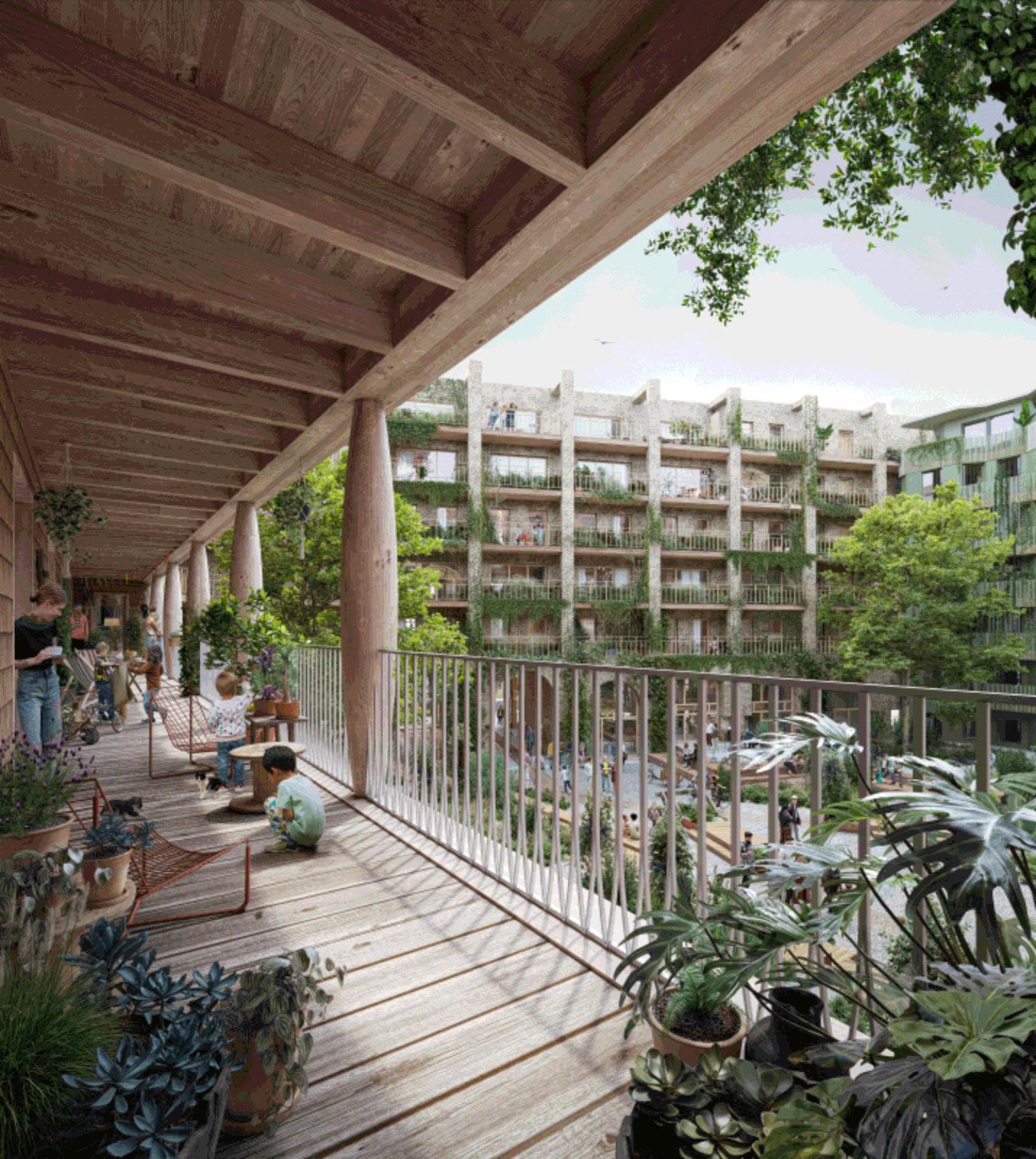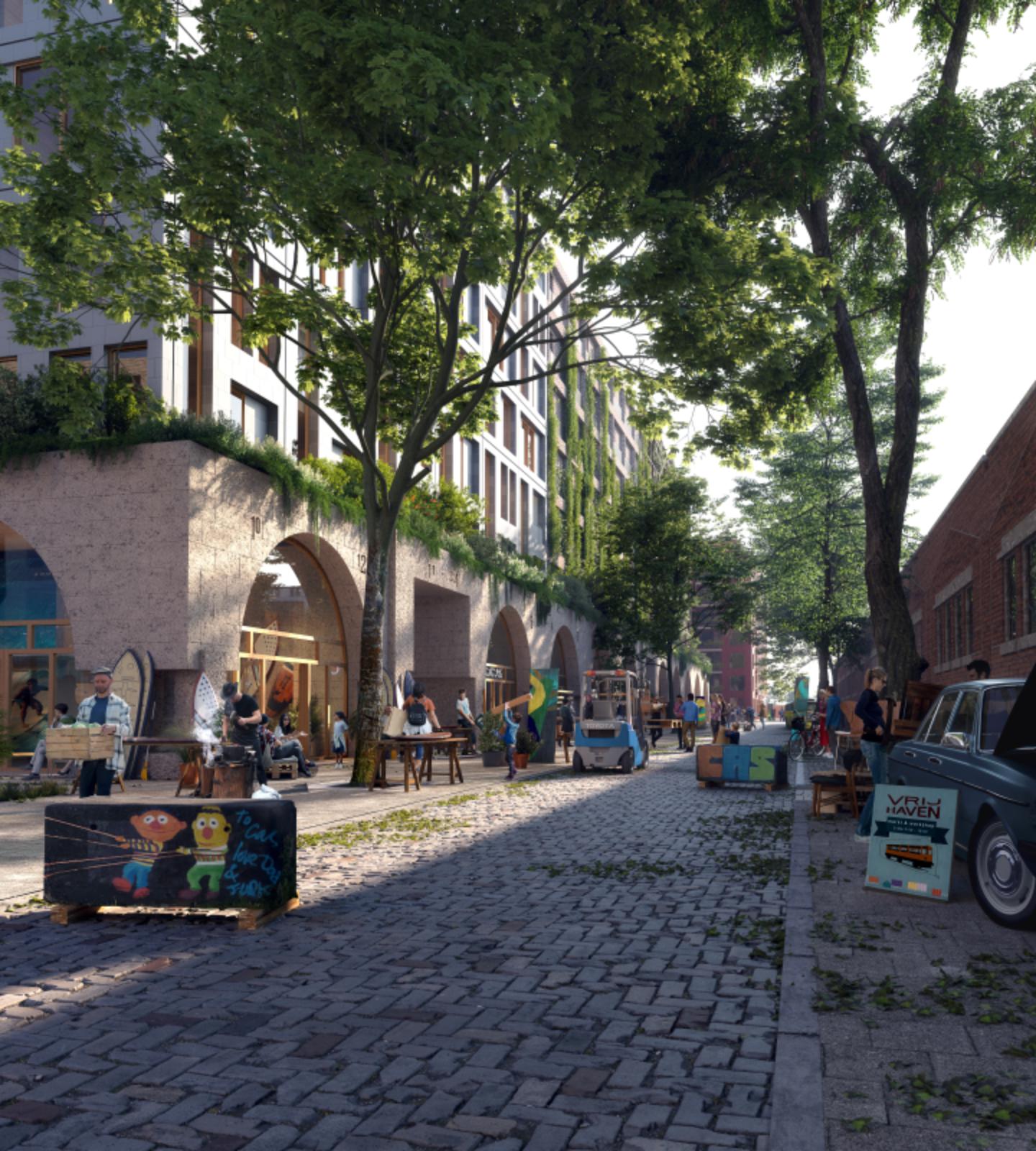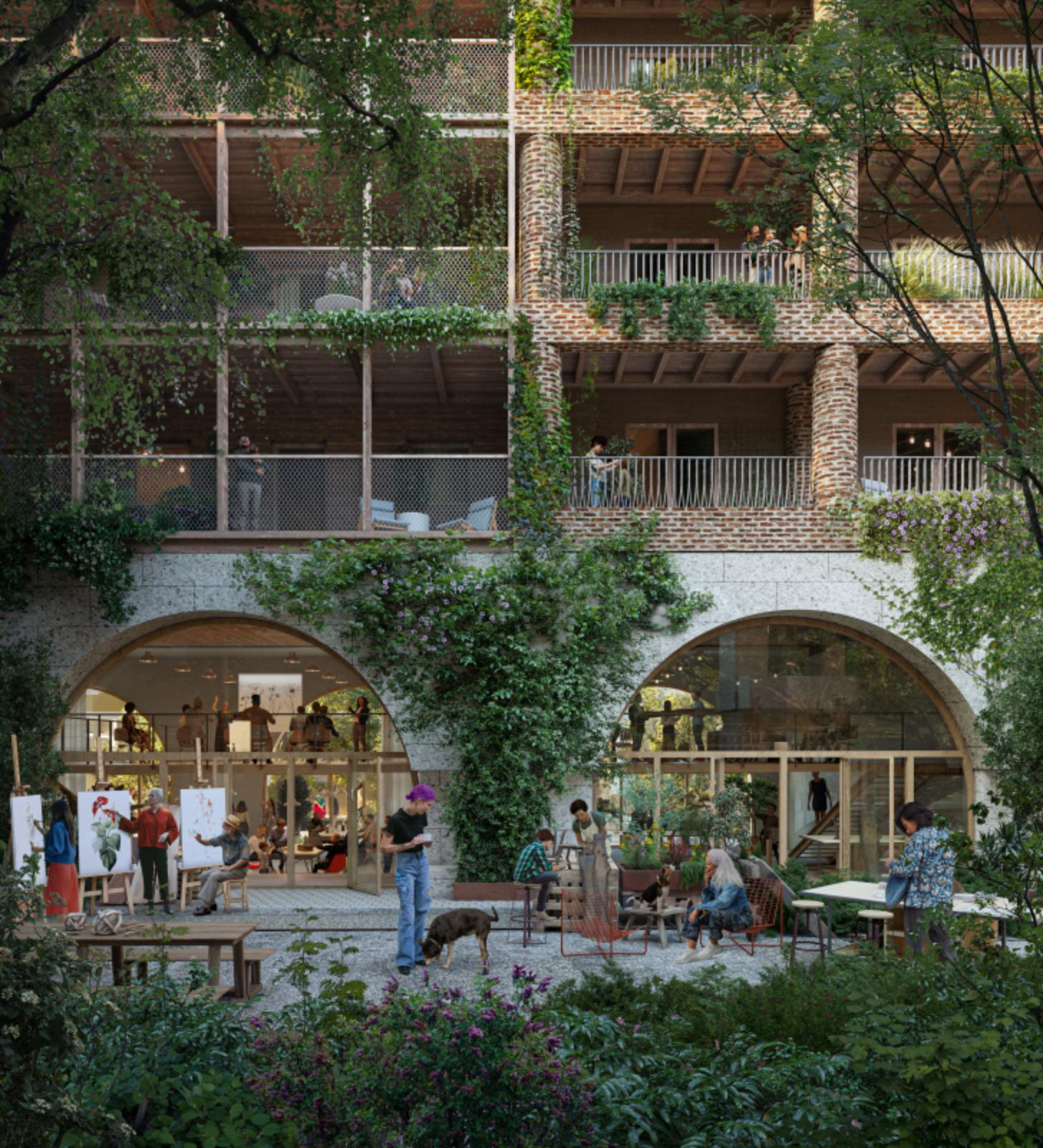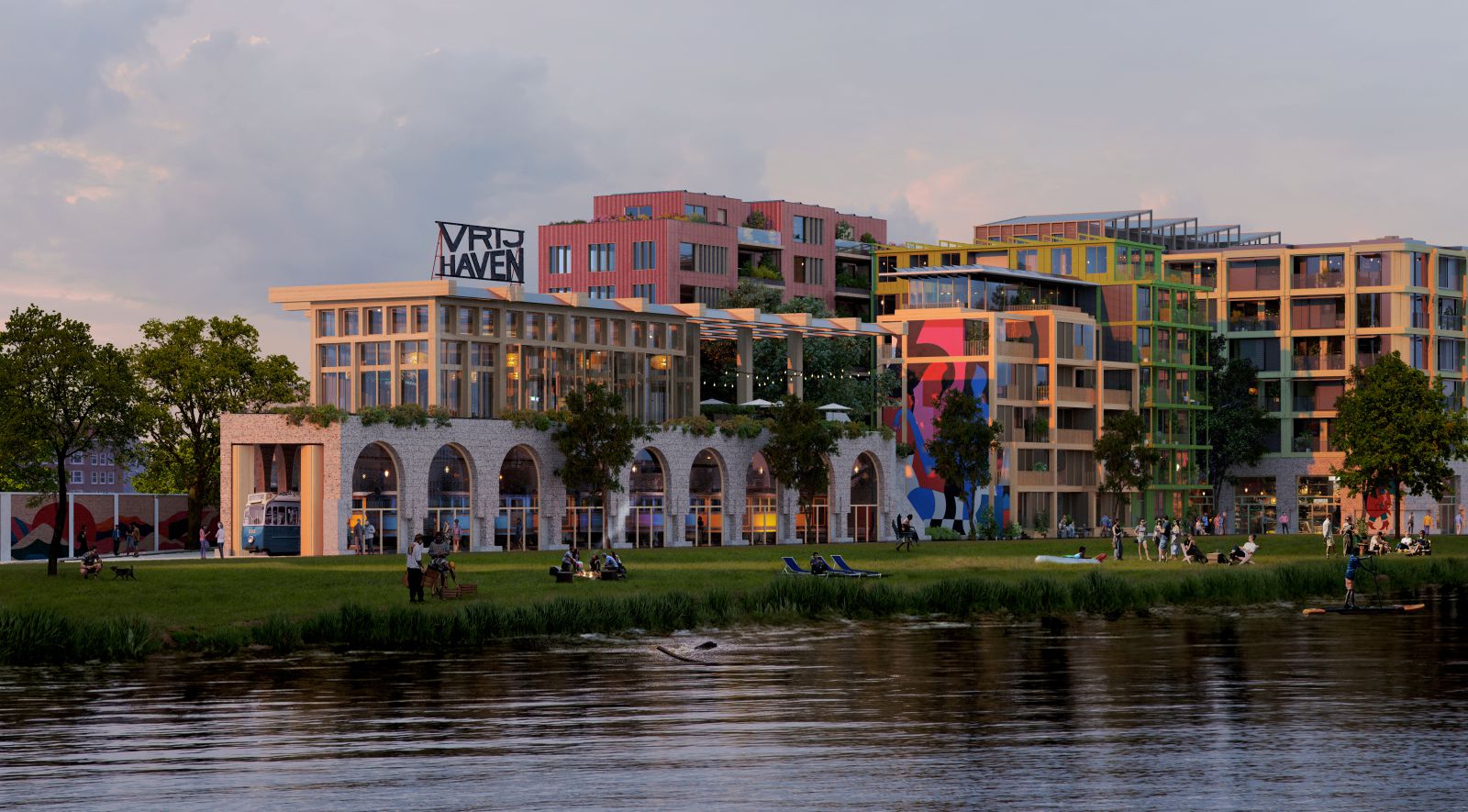VrijHaven: the informal city
The winning design for the Havenstraatterein has been crafted by Powerhouse Company, Studio Donna van Milligen Bielke & Ard de Vries Architecten, Team V Architecture, Joppe Kusters, and DELVA Landscape Architecture | Urbanism and will be developed by RED Company and Caransa Group.
The plan incorporates the existing qualities of the site into a new urban ensemble. VrijHaven is a place for experimentation, devoid of rigid boundaries, designed to allow space for the individual expression of its future users. The site is a well-known fringe area in Amsterdam and has much to offer: a creative community in between old industrial remnants, historic trams, and informal greenery.

Fringe areas like this are essential for the city, which is why the design offers the opportunity for the current local businesses, creatives, and makers to have a space again in the new plan as they are a part of the area’s identity.
When creatives collaborate
VrijHaven is a refined ensemble, crafted through close collaboration among renowned architects, each contributing their unique and creative designs that consist of a vibrant plinth and expressive residential buildings. The ‘Oerplint’, designed by Studio Donna van Milligen Bielke & Ard de Vries Architecten, is a monumental plinth that draws significance from the site’s original railway character, radiating abundance and timeless appeal.

Functionally, the plinth recalls the activity of the Havenstraatterein’s second life, housing flexible studios, affordable maker spaces, restaurants, and cultural venues. It flanks the area, with the ‘Kopblok’ to the north and the ‘Tramloods’ to the south, which will house a museum for historic trams. Atop is ‘De Vrijplaats’, a public square for cultural programming.
In between, the Oerplint stands as a timeless monumental element that serves as a stage for the blocks above. Powerhouse Company, Team V Architecture, and Joppe Kusters designed an enticing family of twelve expressive housing blocks characterized by raw elegance comprising re-used and biobased facade materials, flexible plans, distinctive roofscapes, and small-scale circulation design.

The design stimulates meeting, individual expression, and a sense of community. In appearance, the building blocks are individually characteristic but collectively create a cohesive ensemble of buildings.
The housing ensemble and Oerplint are strongly connected by lush green courtyards, designed by DELVA. This is where neighbors meet, and children can play freely. An art route throughout the neighborhood forms an additional inspirational layer to the design.

Where free spirits can live and create
VrijHaven keeps the characteristics of the Havenstraat and offers space to build a new community. Developers RED Company and Caransa Group provide affordable space for entrepreneurs and inhabitants. The plan includes housing for every age bracket – with extra focus on families and specific spaces for creatives.
Instead of a strict boundary, the facades become a transitional space and the street drawn into the building, becoming part of the urban fabric. This transparency in the streetscape is crucial for interaction between people and programs. This design element invites residents and users to take ownership of the space.

An energy haven
Embodying the sustainability ambitions of the team of architects and clients, VrijHaven will be an energy-efficient, healthy, and energy-supplying district and therefore ready for the energy transition. Combined with ambitious energy-saving methods, the project achieves impressive BENG scores and will become a true ‘energy haven’.
By designing parametrically and in balance with spatial quality, the entire neighborhood will be connected to a smart grid to reduce energy costs, CO2 emissions, and grid congestion. VrijHaven minimizes environmental impact, employing wooden structures and reused materials in construction, turning it into a showcase of circularity and biobased innovation. Source by Powerhouse Company, Studio Donna van Milligen Bielke & Ard de Vries Architecten, Team V Architecture, Joppe Kusters, and DELVA.

- Location: Amsterdam, Netherlands
- Architect: Powerhouse Company, Studio Donna van Milligen Bielke & Ard de Vries Architecten, Team V Architecture, Joppe Kusters, DELVA Landscape Architecture | Urbanism
- Strategy & Concept: Tenderboost
- Energy performance: Merosch, DGMR
- Materialisation: Alba Concepts, Vlasman
- Mobility: The Future Mobility Network
- Parametric study: OMRT
- Programme & stakeholder management: STIPO
- Constructor: Van Rossum
- Contractor: Construction Company
- Water transport: De Omgevingsformule
- Cost consultant: Metron
- Client: RED Company, Caransa Groep
- Size: 43 088 m2
- Time span: 2023 – ongoing
- Images: Aesthetica Studio, Proloog, Powerhouse Company




